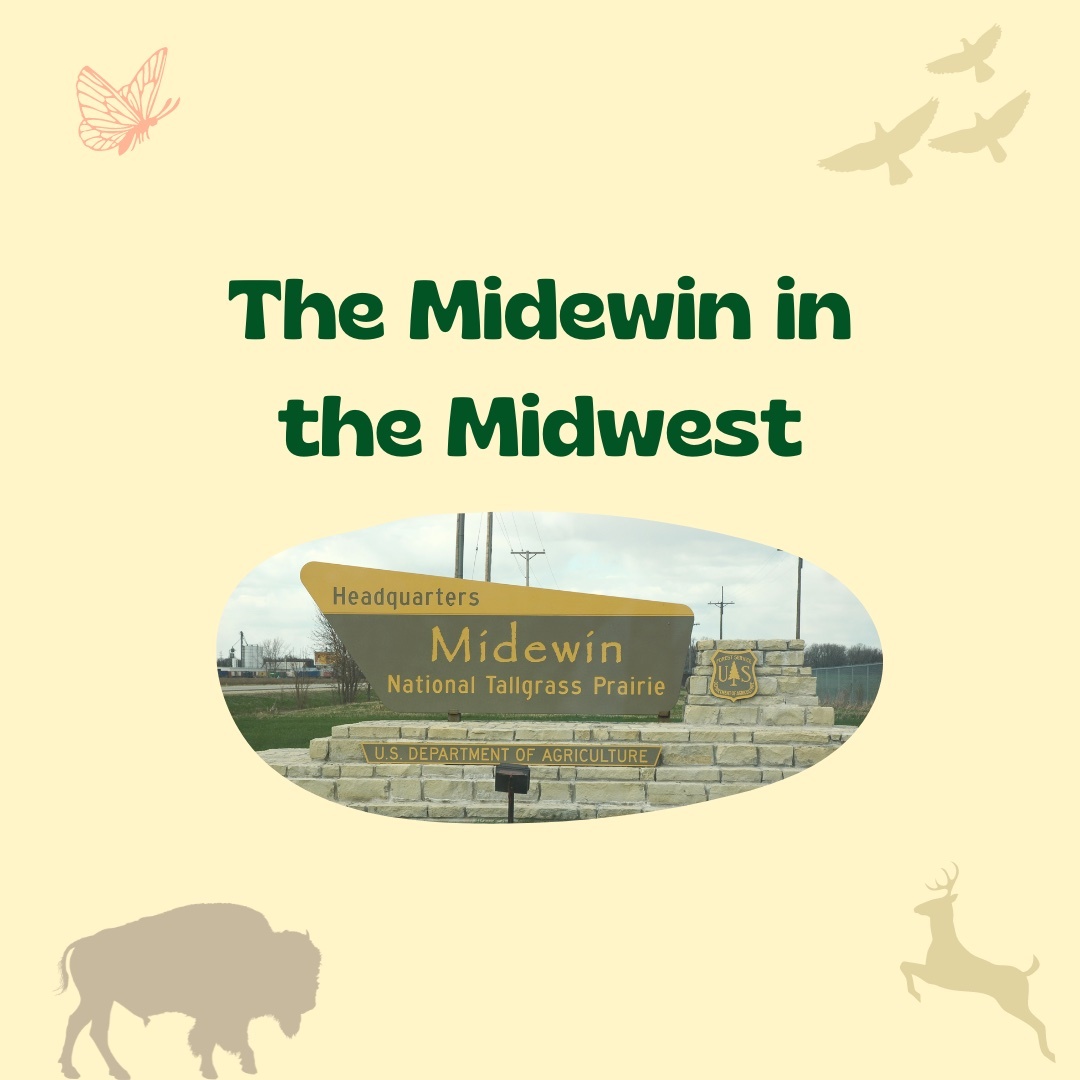The Midewin in the Midwest
By Summer Seligmann, C2ST Intern, Loyola University
Just outside of Chicago in Wilmington, Illinois, there’s a place called Midewin National Tallgrass Prairie where you can see native wildflowers, grassland birds, and bison (yes, bison). Midewin is the largest protected grassland reserve in the greater Chicago region, and the first ever designated national tallgrass prairie in the United States.. Midewin and other preserves like these are crucial in protecting our wildlife, biodiversity, and to preserve natural spaces for generations to come.

In 1996, the Midewin National Tallgrass Prairie was established by the Illinois Land Conservation Act to preserve native populations, provide educational opportunities, and recreation. Tallgrass prairies might just look like a lot of grass, but they’re extremely complex and diverse ecosystems that support many different flora and fauna. These prairies used to cover large portions of the country, over 170 million acres, and were North America’s largest continuous ecosystem. Before the 1800’s, tallgrass prairie covered 21 million acres in Illinois. In comparison to the rainforest of Brazil, this was the second most diverse ecosystem in the world. As history goes, for this ecosystem and many across the country, the land was converted to farmland by European settlers, and now less than 4% remains. According to the National Parks Service, tallgrass prairies are one of the rarest and most endangered ecosystems in the world.
That’s why reserves, like Midewin, are essential. While these ecosystems have been destroyed over time with only small habitat patches remaining, there is hope. At the Tallgrass Prairie National Preserve in Kansas, there are over 30 species of mammals and 40 species of reptiles and amphibians that live there, and more than 200 different bird species migrate through the area. At Midewin, there are 26 species of reptiles and amphibians, 42 species of fish, and bald eagles have been spotted on the reserve. In 2015, Midewin introduced 27 bison in a restoration experiment to see if their presence would help improve the habitat. Bison once roamed across the country, but they were nearly hunted to extinction. This experiment will continue for 20 years, and will help us understand how bison grazing preferences might help prairie restoration.

As natural landscapes become more scarce, we must protect and restore the land we have left. Preservation and conservation sites provide habitat for endangered and threatened species, maintain ecosystem balance, and allow future generations the enjoyment of the natural beauty of the world.
If you would like to learn more about Midewin, you can watch our series on the Midewin Prairie here. Or check out the first part of the series below!